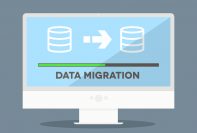Organizations, businesses and governments have become decentralized at some point in time, even before the blockchain technology came into the picture. Different business models will try to decentralize their services to customers and suppliers. However, if there is a central authority controlling all those applications, then it is not a decentralized model. This is where the blockchain comes to mind in the decentralization of applications, which eliminates the central control. In order to understand decentralization in the blockchain, you will need to look at it from different angles.
What is decentralization in the blockchain technology
Decentralization is simply the spread of computing power to different nodes, machines or computers, such that every node is independent of the other. This means that there is no single central center where those nodes receive a command on what to do. If a single node fails, other nodes in the network will continue to operate as they do not depend on each other. When you factor in blockchain in decentralization, the former provides a distributed ledger within a network, where information is recorded and verified by the users of those nodes. Different nodes form a block and all the blocks within the network are linked to form a chain where information is communicated for the purpose of transparency.
Benefits of decentralization in blockchain
Decentralization enables developers to build decentralized applications (Dapps) on the blockchain network. A good example is Bitcoin, which was created on the blockchain network. It is an open source application which means that the code is publicly available for any other developer out there to fork. After Bitcoin was developed, over 1000 other Dapps have been developed to give rise to cryptocurrencies. It provides developers with the needed security for their applications. This helps users to trust those projects as compared to the case of web applications that have a single control center and thus are more vulnerable.
Users of the network are able to benefit from proof of work. Information in the blockchain is decentralized and any recorded transaction has to be verified by the users. Once the users verify it, they are rewarded using bitcoins. It increases transparency since it is a public ledger. Dapps built on the blockchain network have to be open source. This means that anyone can access the code which increases trust.
Where decentralization in blockchain works
Although this type of technology is a great invention for developers, organizations and the world in general, it does not work for all data and applications. Some of the following cases where it works include:
- Where data or applications can be broken down and stored in nodes for computation purposes.
- Where no physical assets are involved in transactions.
- In an environment where there are no or little complexities in operations.
- Where there is no central control of information
There are many centralized applications in industries, such as eCommerce where user private and public information is controlled by the firm. With the rise of Dapps and the blockchain, more developers in the future will build Dapps like OpenBazaar to address the limitations of centralized apps.




